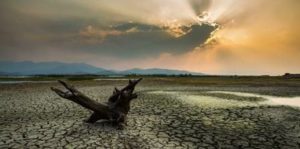In our previous blog post, we discussed flooding trends and frequencies and how public safety officials can be prepared for potential floods. In our final post that wraps up this series, we’ll discuss in great detail each parameter that should be closely monitored during a potential flood and why integrating weather forecasting is so important.
The most critical parameters are tide prediction, water level and wave height.
Why are they the most important?
Tide predictions are based on both the moon and sun’s gravitational pull that acts on large bodies of water during a specific time period. Meaning the timing of the storm can impact just how severe the impact will be. Let’s say a severe storm or heavy rainfall is approaching. If the storm hits during low tide, public safety officials might not have to prepare to the same level, or have as many resources on hand, than if the storm was to hit at high tide, when the severity of flooding would increase.
Water level is the most obvious factor when determining the possibility of a flood, however, instant access to this information is not always readily available. Thousands of ocean buoys and river gauges allow public safety managers to plot water level observations, allowing weather information to be taken into consideration as well, increasing situational awareness with a real-time geographic representation of high-impact ocean tides and river depths. Hourly forecasts of ocean water levels give insight on whether strong storms, winds or other large-scale weather patterns will impact tide levels in the future, specifically highlighting times of day when tides will be higher than expected.
Wave height allows public safety officials to understand the complete significance of a storm when combined with other factors such as tide prediction and water level. During a storm, if high waves are projected but will only occur during low tide, the impact may be more manageable. Wave height gives officials a better idea on the level or preparedness needed in a potential flood and if infrastructure or communities will be impacted.
So why is weather forecasting critical to flood prediction?
Real-time weather data and accurate weather forecasting can be combined with current technologies to provide public safety officials with the most concise tool for storm preparation. Using a map of water conditions, officials can overlay an hourly forecast to determine when the most critical flood parameters will align with severe weather. Accurate forecasts will allow officials to constantly be in the know, meaning floods won’t be unexpected. The climate is changing and officials need to know how areas will be impacted by severe and more volatile weather, in order to keep communities and infrastructure protected from deadly waters.
For a free download of our new white paper, “The Effects of Climate Change on Flooding”, click here.


